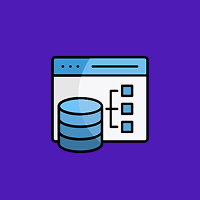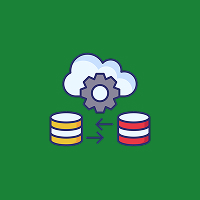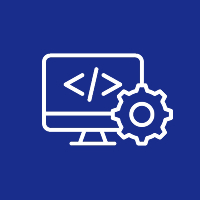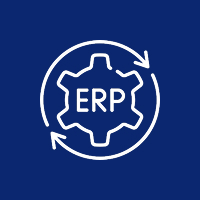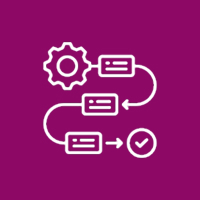Organizations utilize a multitude of systems to enable various operations. Whether it’s a CRM, ERP, web-based e-commerce, or a platform for analytics, organizations are loaded with systems. However, if those systems cannot integrate and talk to each other, they will create operational silos, redundant work, and missed opportunities. Enterprise system integration is the remedy to this problem in that it integrates technology, processes, and data across the organization.
Despite the advantages being substantial, many decision-makers still ask: Is this worth the investment? To answer that question means formalizing the return on investment (ROI) of enterprise system integration.
What is Enterprise System Integration?
Enterprise system integration is the enabling of different IT systems to connect and be utilized as one cohesive organization. More simply, the enterprise system integration facilitates data flow across applications, departments, locations, etc. Enterprise system integration could mean integrating and launching legacy systems with modern cloud applications, streamlining workflows across departments, or even automating workflows in different business units.
A positive experience would diminish the repeat entry of the same data in multiple systems, minimize possible errors, and create real-time access to accurate documentation driven by integrations. Ultimately, these items lead directly towards measurable ROI.
Why Measure ROI?
Most integrations can be an upfront expense and organizations will often have financial needs to procure the integration tools, resume projects on the need for integration expertise, and validate an adequate budget for staff training. At the end of the day, measuring ROI can help validate upfront costs and identify how the integration has derived value to the business.
Key Methods System Integration Yields ROI
Following are the primary ways enterprise system integration generates tangible returns:
1. Enhanced Productivity
When systems are separate, employees spend irretrievable time engaged in manual processes — such as entering the same data in various systems or moving files from one platform to another. Integration allows this manual process to be automated, enabling teams to focus their time on higher-value work.
For example, if sales, finance, and inventory systems are integrated, orders can update automatically, invoices print automatically, and stock levels adjust in real-time — saving hours of work.
2. Improved Data Quality and Less Errors
By having to enter data manually, often times duplicate records or mistakes are created that require time and money to cure. Integrated systems automatically sync data, which reduces errors and allows teams to work off the most accurate data.
Improved data quality gives organizations better reporting capabilities, forecasting, and decision-making – all of which can lead to a cost savings and better decisions.
3. Faster Response Times
Integration allows for a quicker pace of order fulfillment, customer service requests, and overall supply chain management. When customer data is seamlessly transferred across platforms, it allows teams to quickly remedy issues and provide better service which can drive greater customer satisfaction and retention.
4. Savings on Costs
Ultimately, integrated systems reduce your operational costs by reducing manual work, preventing costly mistakes, and enabling you to make the best use of your company’s resources. Companies have also saved costs by stretching the life of their legacy systems instead of replaced them generously as a result of integrating with more modern systems.
5. Improved Scalability
Integrated systems make growth easier for companies. If your data and processes are flow together easily, adding new tools, onboarding new teams, or expanding into new markets become less cumbersome, and you can initiate those action without rebuilding your system from scratch. Being agile in this manner will directly impact the revenue and competitiveness of your brand.
How to Calculate ROI for System Integration
Calculating ROI begins with knowing the costs associated your investment and determining the value of your returns. Here’s the process:
Step 1: Identify Costs
List out all costs required by your integration project, including:
- The fee associated with the software/platform used (e.g., iPaaS tools).
- The fee associated with hardware/infrastructure, if needed.
- Implementation and development costs.
- The fee associated with consulting or integration partner.
- Training and change management costs.
- Ongoing maintenance and support costs.
Step 2: Identify the Benefits
Determine the overall benefits your business gets from the integration. The most common benefits include:
- Labor hours saved by automating manual entry and other tasks.
- Mistake reduction and the associated cost savings
- Speeding up processes that can result in sales (e.g. shipping orders quickly).
- Higher retention and increased loyalty from customers.
- Cost savings from removing redundant systems.
Example: Real-World ROI Example
Let’s say a mid-size retail company integrates its e-commerce website with its inventory management system and shipping software.
- The company was spending 300 hours per month to update orders manually prior to working on the integration.
- The integration has now brought the labor hours down to 50 hours per month, saving 250 hours.
- Using an average on-boarding employee cost of $30/hr, that equates to $7,500 in labor saved a month, or $90,000 a year.
This is just factoring the reduction in labor, and the extra benefit from employees being able to provide faster shipping, less mistakes, and happier customers can become even greater.
Maximizing ROI: Best Practices
To ensure the best outcome for your integration effort, consider the following best practices:
- Set Clear Objectives: Define what success looks like. Are you trying to lower your costs, increase your speed, or improve your data accuracy? Having clear goals will help you measure your impact at an appropriate time in the future.
- Start Small: Test drive your integration process with one process or department before rolling it out to the entire organization. You will be able to deliver quick value to your organization and mitigate risk.
- Use the Right Tools: New integration platforms like iPaaS are designed to lower development time, lower costs, and maximize your ROI.
- Monitor and Optimize: Identify key metrics and monitor them over time, adjusting your workflows as needed to identify other areas for efficiency.
In Closing
Enterprise system integration is not just an IT improvement; it is a strategic investment with real and tangible returns. When you connect systems, and automate workflows, organizations drive lower costs, boost productivity, improve data quality, and allow for agility in a rapidly changing marketplace.
When you are in the position of tracking and measuring the impact of your investment clearly, you will be in a position to articulate to your leadership the true value of integration for your business, and enable your organization to remain one step ahead of its competitors.













 Database Development
Database Development








